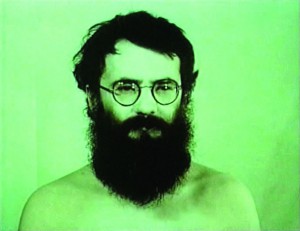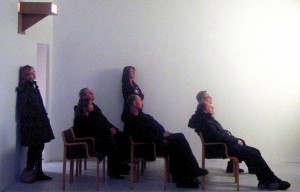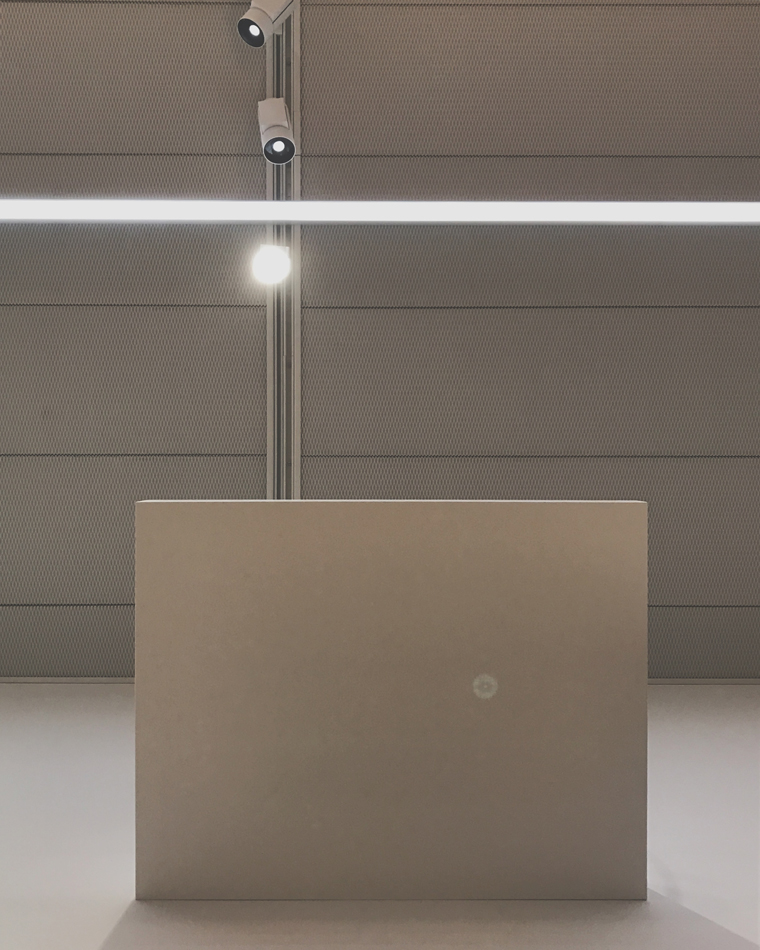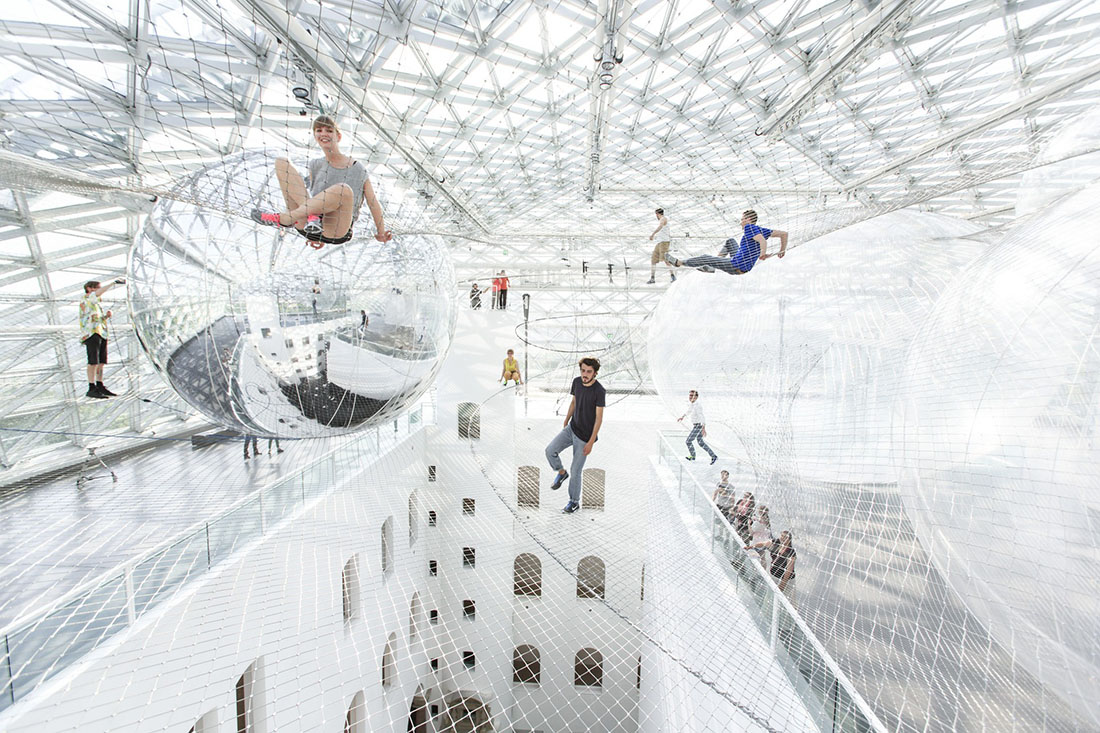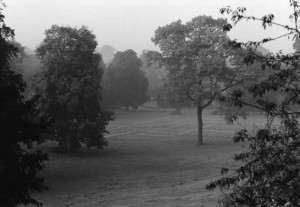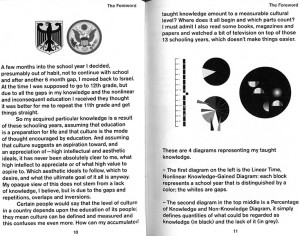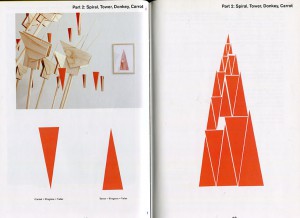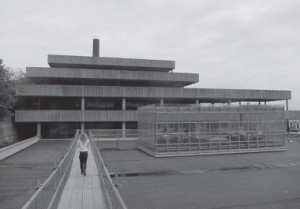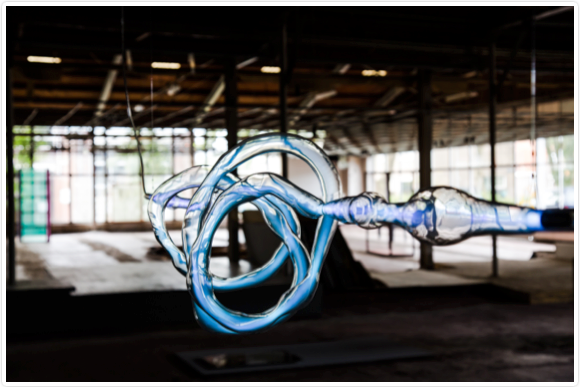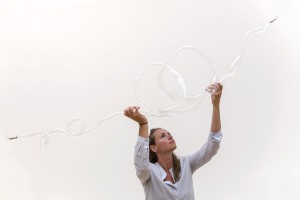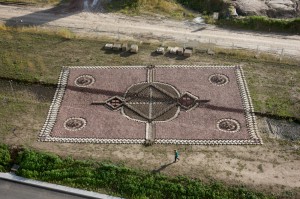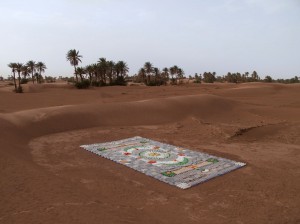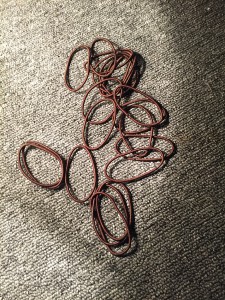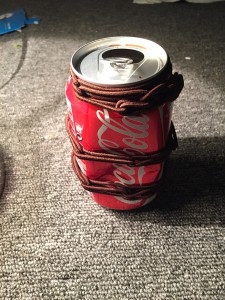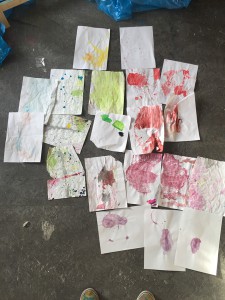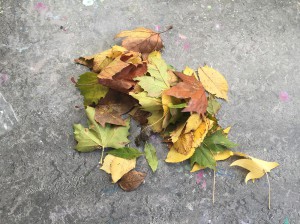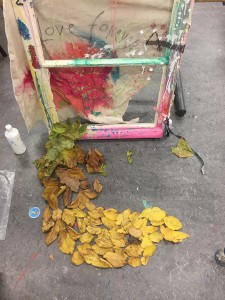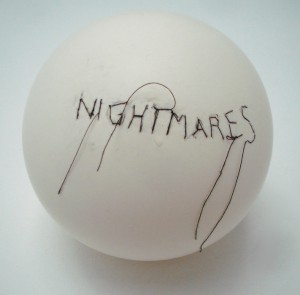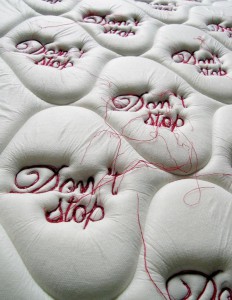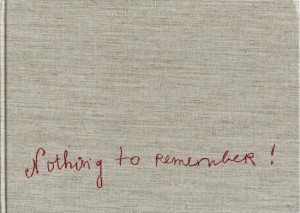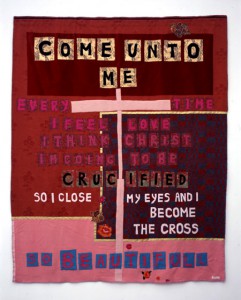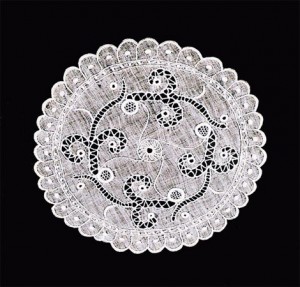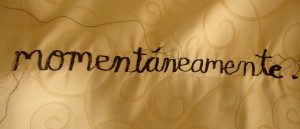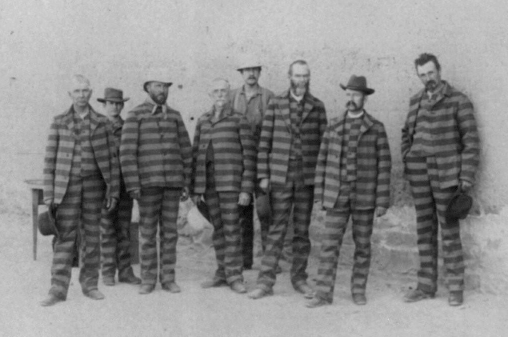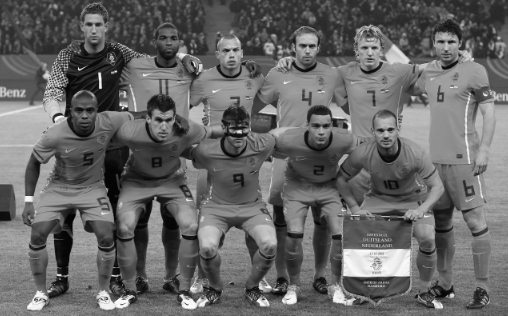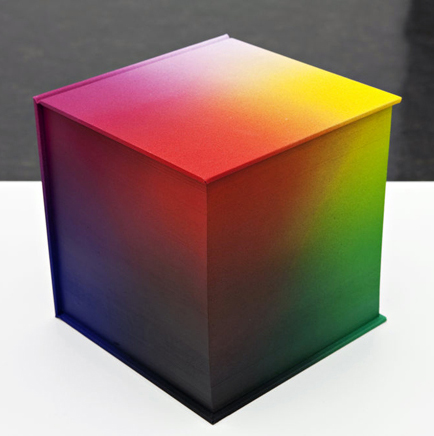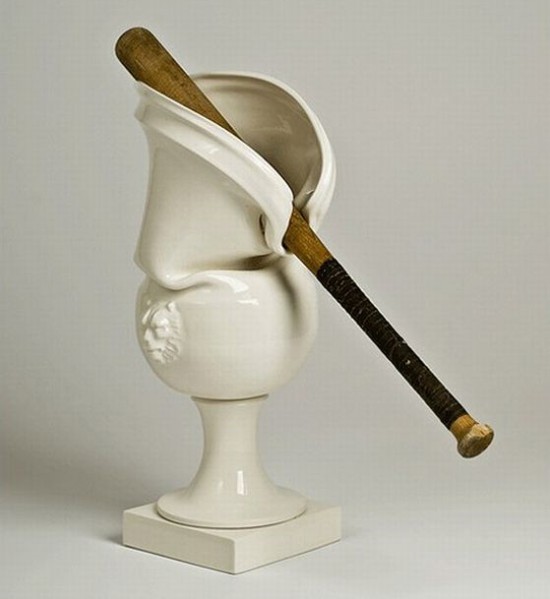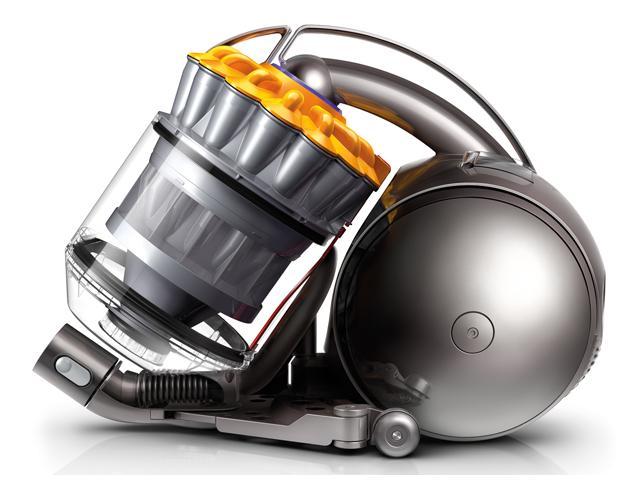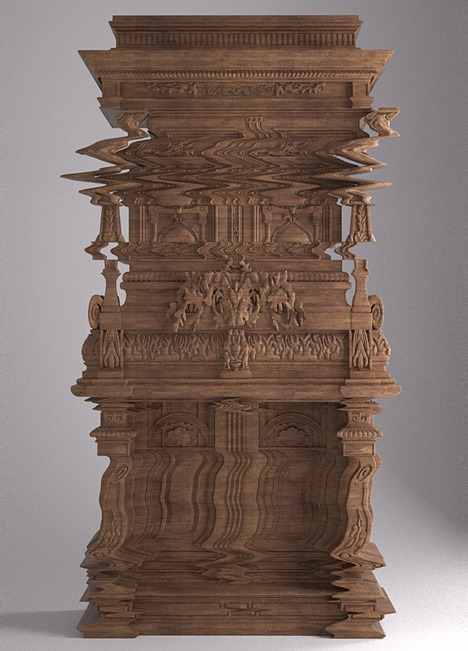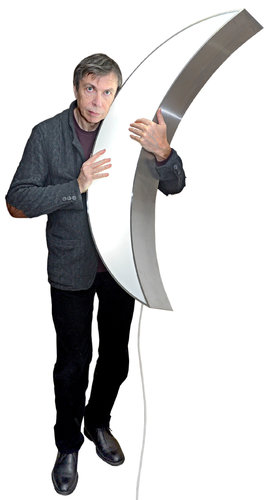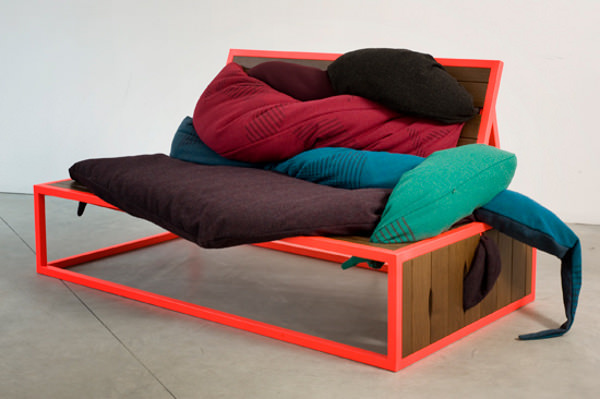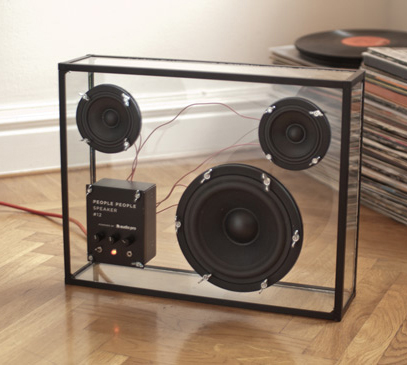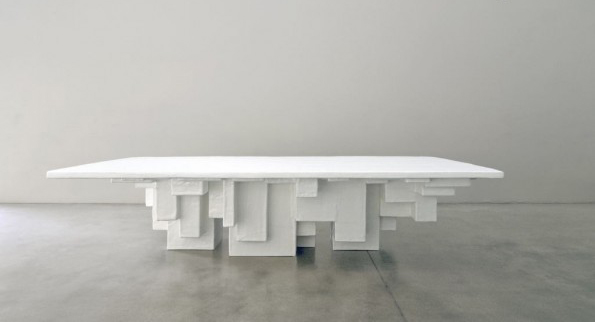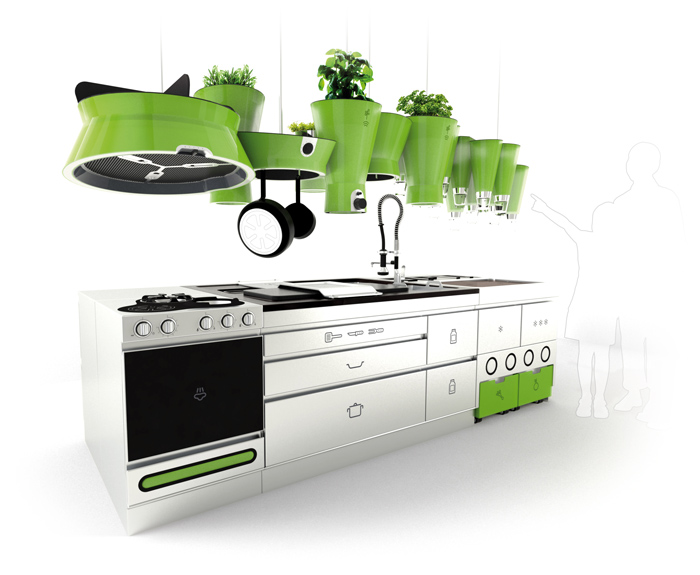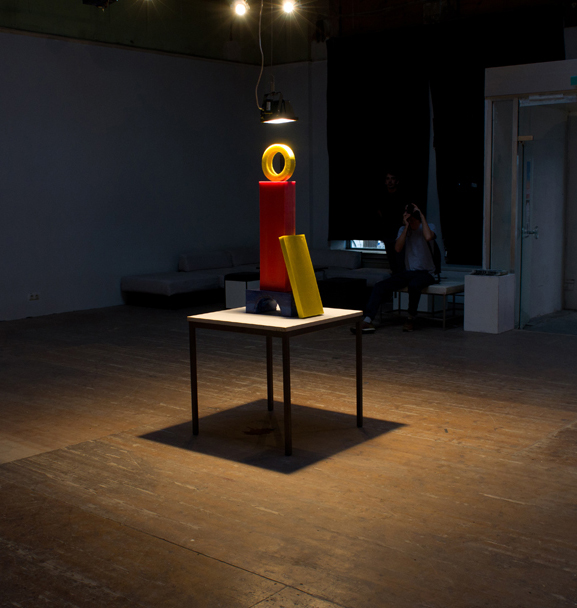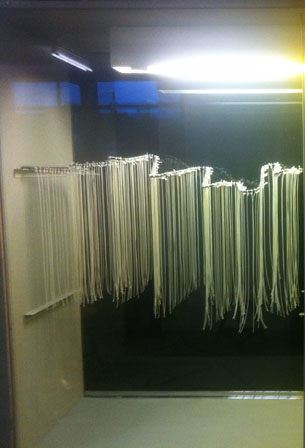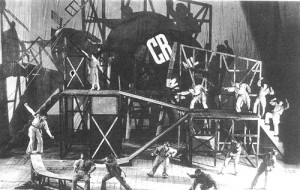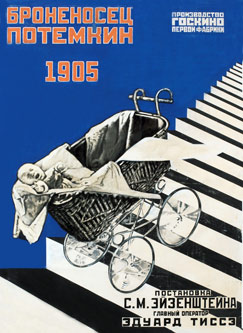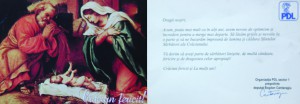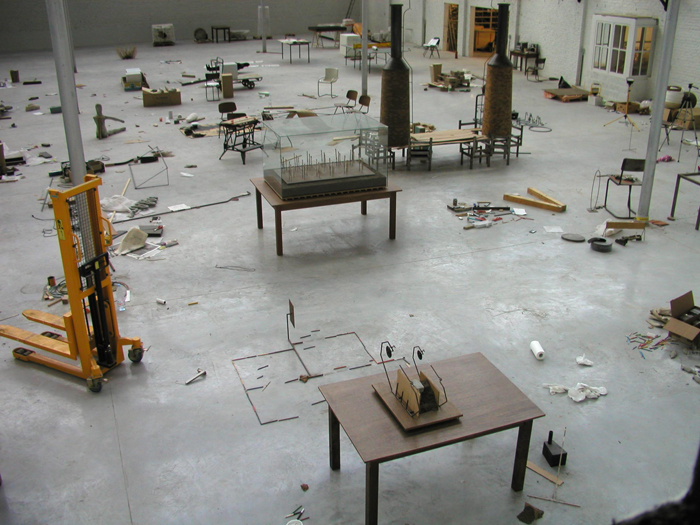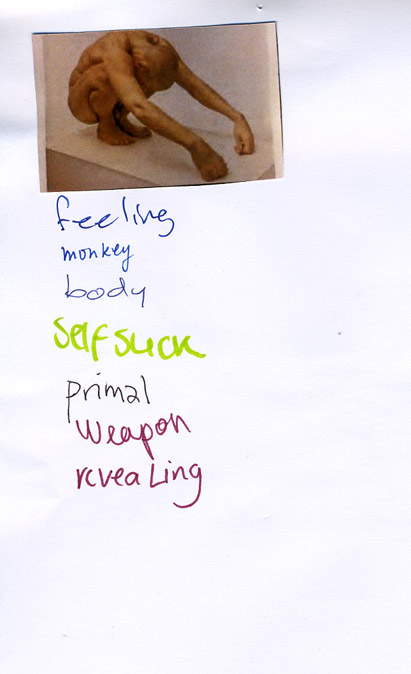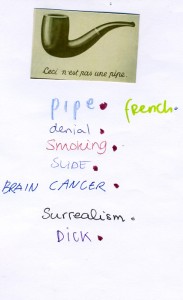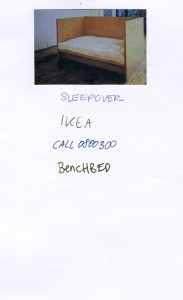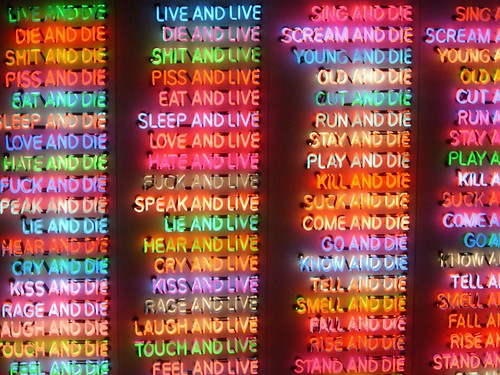It is tricky to recognize when you are misplaced, it is even harder to respond to it right on the spot. You are supposed to serve your human, you are most and foremost functional and have sublime social purpose. Then your human drags you out of your context so inconsiderately that it leaves you nothing but to show your worn out bottom on the pedestal which supposed to elevate you. As I approach you, by climbing the stairs which is set up next to you, I have the chance to look at you horizontally. Although, a deep and artificial ravine appeared between us. The human expression provoked by your forced position urges me to interact with you but the circumstances leave me unsatisfied.
Chair by Mies van der Rohe (but it doesn’t matter)
The chair was the first object at the exhibition which talked to me through the atypical situation that chance created. The situation was somehow absurd and opened to interpretation. Just as if Pawel Freisler, a Polish avant garde artist would had created it to dislocate my train of thoughts.
Freisler “was negating reality and its status quo by encouraging people to create alternative imaginary order. In his work a given subject or place served as a catalyst for creating an extraordinary social situation.
His actions in public space are a form of probing reality, to reveal its absurd dimension. (…) In 1971 he undertook his first work with a table and a chair. What mattered was the table’s status as a “basic idea”. He was attempting to arouse interest, to break routine, without giving observers any hints as to the real meaning of his activities”.
I found myself in the position of a pleased voyeur, which tickled both my curiosity and fantasy. I was busy with taking photos then I looked around with a sheepish grin. As if I was afraid of being caught on the street while taking sneaky pictures under a stranger’s skirt.
Pawel Freisler – Activities: Table and Chair
Self-realisation as a spectator helps to stay alerted and turn reflective. Gabriel Lester found another way to break habitual patterns down. He introduced a project (SEEN) in an arts centre where “projections suggested a look inside. The projected scenes are environments where groups of people observe something that is out of sight, hidden behind the wall. This juxtaposition – created by watching a projected environment inhabited by people who, in turn, appear to be watching something out of view – provokes the sensation of the observer being observed, and consequently a higher awareness of one’s active and inverted role as a spectator –
as though watching an image that is quite literally looking back at you.”
SEEN (2006)
Standing and staring underneath the pedestal, the unusual imagery in my head widened my perspective as I was abducted of the traditional and passive spectator’s role that I usually undertake. I started to look at Stedelijk’s way of displaying more critically as their concept seemed to override the artworks so much that whole new stories were about to emerge. My story, and the museum’s story. But certainly not the chair’s.
The designers explained, they made the arrangement in order “to reinforce cross-connections and shared narratives. The lay-out understands the collection as a network of relation rather than as a presentation of individual artworks. To capture these networks, very thin walls define an almost urban environment of free association and multiple relations.”
How much freedom do I have while walking between the walls of the designers’ concept? How much space do the objects have to be explored from three meters high?
Zofia Kulik and Przemyslav Kwiek were post war Polish artistic duo and uncompromising critics of their surroundings. They said once: “The world is half wonderful, half ugly. The humanistic and artistic theories are usually formed in the mood of the former half. This creates a false edifice of ideas and philosophies, especially a false concept of the artist, his mission and values, his false status.”
Chair by Mies van der Rohe (exhibition design by Rem Koolhaas)
Real exchange with the chair could not happen. I could not find anything beyond the meanings that I gave to it. The revealing moment that I experienced did not say much about the object itself. It was about the gap between me and it, and all the uncanny thoughts I filled the gap up with. The chair appeared to be in the weird melting pot of the museum’s peculiar way of showcasing, chance, and my tyrannical associations, which made me unable to explore the chair’s real properties.
But still,
how handy errors can be?
.
.
Are they errors to be fixed or useful hyperlinks?

